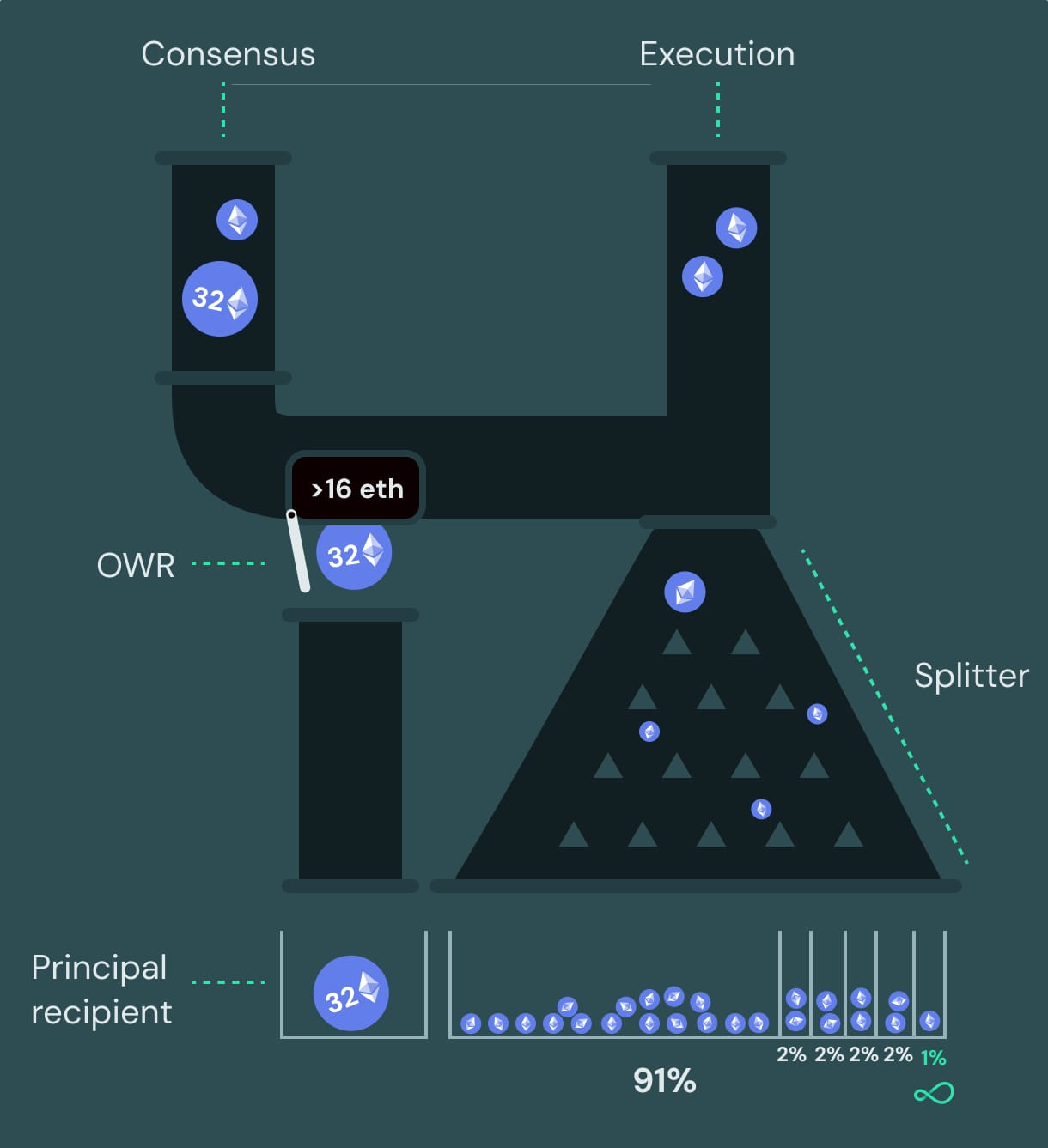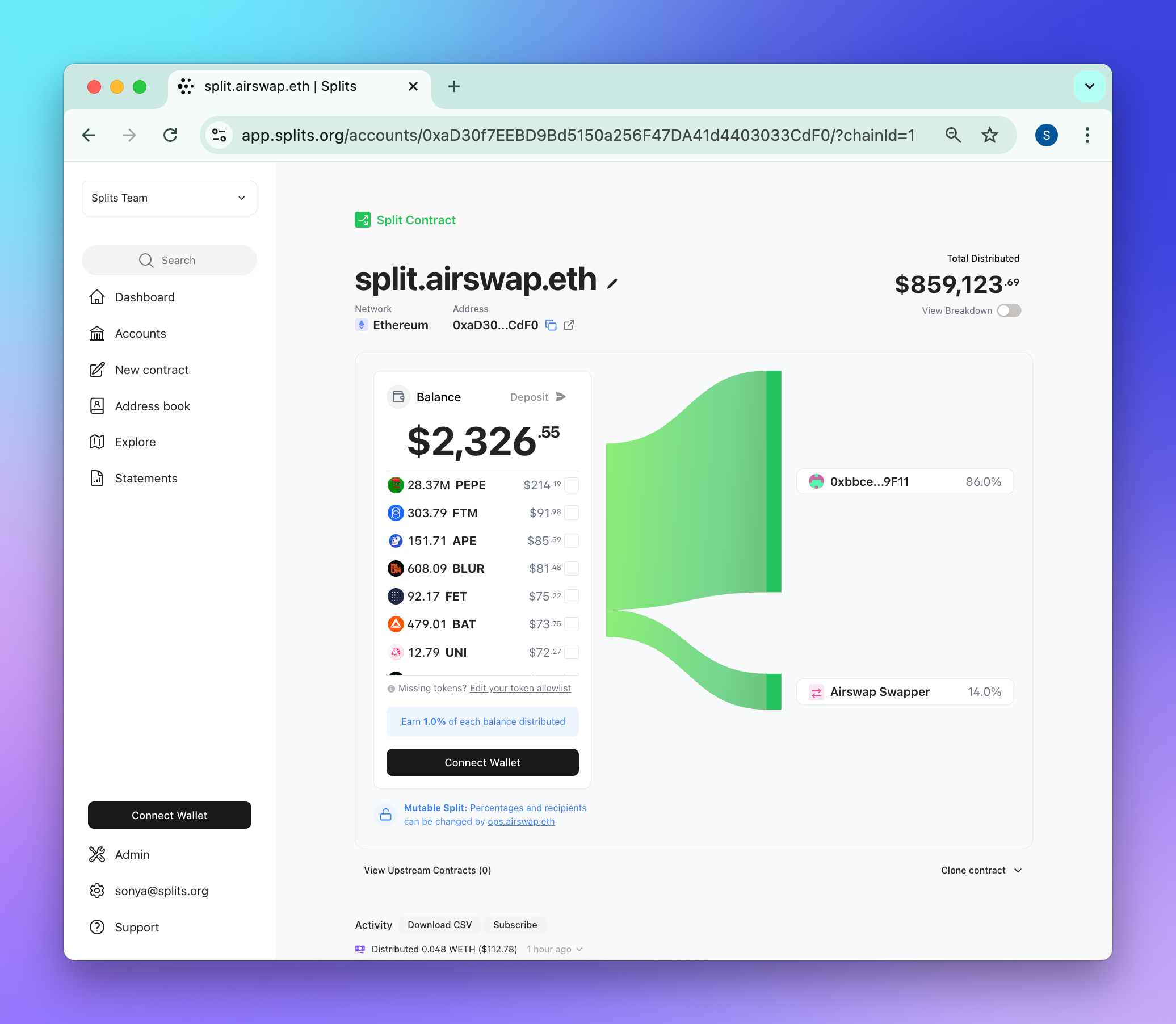Ethereum resilience with Obol distributed validators


Obol wants you — yes, you — to run the global infrastructure that secures the Ethereum network. Well, you and six of your buddies. Obol's distributed validator (DV) technology enables "squad staking," so everyone and anyone can help keep Ethereum decentralized, while earning some yield for their trouble.
A standard Ethereum validator requires staking 32 ETH. That's around $75,000 at current prices, AKA a lot of money for most individuals. But the sum is more viable for a seven-person group; 4.57 ETH is about $10,700 per person.
Still too expensive? Understandable, since most of us aren't whales. You can run a distributed validator using capital provided by a staking protocol like Lido or Ether.fi, both of which have integrated Obol DVs.
However, Obol DVs aren't just for would-be solo stakers who decide to team up instead.
Why distribute the validation process?
Distributed validator tech is useful for liquid staking protocols, for pro stakers, for home node operators, and simply token holders at large. It's an "all of the above" solution that improves any staking setup by layering in fault tolerance to reduce slashing risk.
Obol sees distributed validators as a key source of resilience — both for the Ethereum network as a whole and for the stakers (of various sizes) who participate. "Traditional validators are fragile," the website explains:
Most validators today run on a single machine, using a single private key. If that machine goes down, that validator goes down. Worse still, if that private key is compromised, that validator is compromised.
Each validator is a single-point-of-failure for the Ethereum network.
By contrast, Obol DVs work like this:
A distributed validator cluster consists of multiple nodes (ideally 4, 7, or 10). Each node within a cluster has a partial validator key share that is generated in a distributed key generation ceremony (DKG). The nodes within a DV cluster operate together as a single logical validator through the inclusion of a DV middleware client, Charon.
Distributed validators enable fault tolerance for validators without introducing slashing risk.
Obol recently released the 1.0 version of Charon, "a DV middleware client that sits between the consensus and validator clients, allowing each node to use any combination of remote signer, validator, consensus, and execution clients," per the announcement. "This builds client diversity into each validator, as each node in a DV cluster can use its own unique client combination."
Stake together, split together
Splits spoke with Samuel Omidiora, who leads Solidity development at DV Labs (previously called Obol Labs). Sam has been working in the Ethereum ecosystem since the "ICO era" of 2018, so he's seen it all.
As Sam put it, Obol's purpose is "to make the adoption of distributed validators easier, trustless," pushing the frontier of Ethereum decentralization. "We have a pretty stable protocol now so we can invite everyone in," he told Splits with a grin.
During development, the Obol team had to figure out "how to efficiently distribute rewards to operators within a cluster." This is where Splits enters the picture.

Sam talked through an example: "Yield needs to be divided between the person that provided capital, for example Lido," and the operators, "the people that run the DV infrastructure on behalf of Lido." Sam explained, "Lido can decide, of this 3% staking reward, we want to give 7% to the operators."
With Splits it's easy for Obol to "encode that information trustlessly onchain." Everyone is able to see "when the rewards flow in, this is how [funds are] distributed." Crucially, "the operators can also verify onchain. They don't need to trust Obol that they will definitely get the rewards."
The Splits app has also come in handy for Obol: "Visualizations on the Splits dashboard have been very helpful for our operators," Sam said. To understand what's going on, "they see a beautiful description of the configuration" and "they can see the reward flow" illustrated clearly.

Be the resilience you want to see in Ethereum
Intrigued? But maybe also intimidated? The staking ecosystem can feel overwhelming to new entrants. Obol created the Techne education program to convert beginners into confident operators of distributed validators. Give DVs a whirl on testnet, then let us know how it goes 🫡